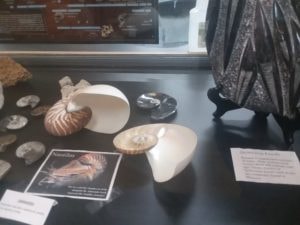There are significantly fewer women in STEM—science, technology, engineering and mathematics—programs than men. According to the National Science Foundation, “Women have reached parity with men in educational attainment but not in science and engineering employment.” Although there is an equal number of women and men enrolled in higher education, women hold less than 25 percent of STEM jobs like doctors, lab assistants, computer scientists, architects and engineers.

STEM includes science, technology, engineering and mathematics.
According to the U.S. Department of Commerce Economics and Statistics Administration (ESA), “the factors contributing the discrepancy of women and men in STEM field jobs include a lack of female role models, gender stereotyping, and less family-friendly flexibility in the STEM fields.” There are no full-time female professors in the natural science departments at Blackburn College. According to chemistry professor Dr. Armstrong, there have been no new hires in the department since 2015. He said, “Most of us are old-timers.”
Armstrong also explained that when they do search for new hires, they actively look for women and minorities. The teaching assistants that he hired for this year are half female and half male. “I didn’t do that on purpose,” he admitted, but it happens that he has three female tutors and three male tutors. This just goes to show that when everyone is looked at based on the quality of performance, it is not always mostly men. Women are just as qualified; they just don’t get the chance to prove it through stigmas and discriminatory hiring practices.
Freshman biology major Kelsey Jachino wants to work in a laboratory after college to study genetics. She feels there’s a stigma about women in STEM fields; that they can’t handle the intensity of the job. In her high school advanced placement chemistry class, her class was predominately women. She had a substitute teacher who told the class he remembered when girls weren’t even allowed to take chemistry. “The way he said it,” she explained, “you could tell he really thought it was strange.” Jachino also revealed that when she tells people that she is a biology major, they assume she is going to be a nurse. Out of the multitude of biology-related careers, people limit her future to only being a nurse because nurses are predominantly women. Therefore, the occupation is stereotyped as a woman’s job. While being a nurse is a great career choice, it’s not the only one that a woman can do.
There is a stigma that women cannot handle the job, there is a stereotype of what careers women should be in and there is an unbalance in the STEM workforce. “It is an ethical issue,” Armstrong stated, “but it’s also a practical issue. Ignoring women and minorities is just wasting talent.” There is an invaluable amount of knowledge packed inside the young women in the U.S. and they should be encouraged to utilize it. It is time to start looking for the root cause of the problem and fixing it. There are huge scientific and technological advances being made and so many more to look forward to in the future. Not letting women in on the action is only slowing down progress.

STEM women are cut out to deal with the intensity of their jobs.
Out of the 554 degree-seeking students at Blackburn, 200 of them are on the record as pursuing a major in a STEM field (i.e. mathematics, biology, chemistry, pre-medicine and computer science). Fifty-six percent of the students enrolled with a STEM major are females, and 44 percent are men. The percentage of women in these majors is high, and hopefully, it will contribute to a future wave of women in STEM occupations.

